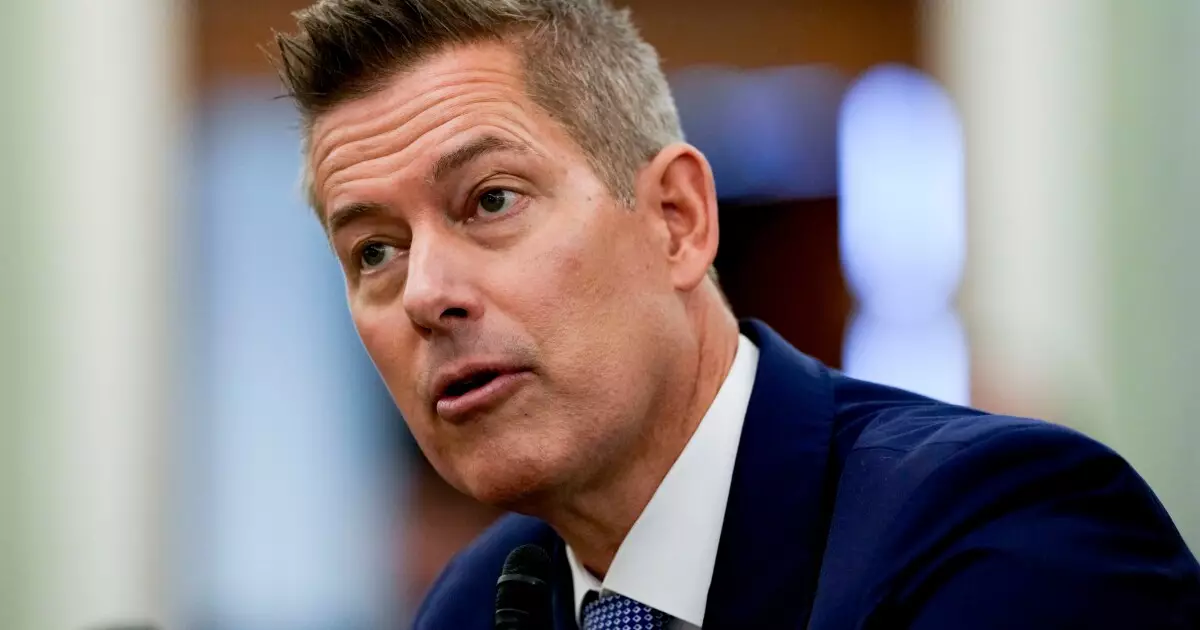The landscape of federal transportation funding in the United States is undergoing a significant transformation as the current administration seeks to align financial resources with its core values and policy objectives. A recent directive from the Department of Transportation (DOT) exemplifies this shift, as newly appointed Secretary Sean Duffy unveiled an order that prioritizes funding for transportation projects according to specific demographic and legal criteria. This move not only marks a departure from prior approaches but also reflects a broader ideological agenda aimed at reshaping American infrastructure investment.
One of the most notable aspects of the new directive is its emphasis on funding projects within communities that exhibit high birth and marriage rates. By directing resources to these areas, the administration aims to foster a demographic landscape conducive to economic growth. This strategy suggests a belief that stable family structures and population increases are essential to market sustainability and the successful implementation of transportation projects. However, this focus raises questions about inclusivity and whether such criteria inadvertently marginalize urban areas facing different sociocultural dynamics.
Additionally, the directive ties funding eligibility to compliance with federal immigration laws. Such a position aligns closely with the administration’s stance on immigration and border control, potentially influencing the allocation of resources based on political ideologies rather than transportation needs. This could pose a challenge for states with diverse immigrant populations that contribute significantly to local economies, as their transportation infrastructure might be deprived of necessary funding due to external political factors.
Financial Directives Favoring Strategic Development
In a notable departure from the previous administration’s funding models, which often prioritized local political goals, the new guidelines emphasize the need for economically viable transportation projects. Duffy’s memo calls for rigorous economic analysis and cost-benefit calculations to guide funding decisions. Notably, the focus on “user-fee models” suggests a push toward privatization or at least greater reliance on self-sustaining revenue streams for transportation projects. This approach can be seen as a method to instill financial discipline within public transportation funding while distancing the DOT from the pitfalls of inefficient and politically motivated expenditures.
The directive also encourages investments in federal opportunity zones, areas that are strategically selected to stimulate economic development in distressed communities. While this could create much-needed infrastructure in underserved regions, it also risks prioritizing certain geographic areas over others, which can lead to long-term inequities in transportation access and investment. Policymakers must remain mindful of these critical issues to ensure comprehensive and just development.
Duffy’s administration explicitly seeks to dismantle programs and policies established by preceding administrations, especially those seen as products of “climate change activism” or partisan agendas. By doing so, the current leadership underscores an intention to return to what it characterizes as foundational principles of transportation administration. This rejection of previous programs means that state departments will have to adapt not just to new funding opportunities but to a different operational and ideological context.
The effort to “trim red tape” and simplify compliance requirements is another significant focus area for the new DOT leadership. While reducing bureaucracy can potentially expedite project timelines and implementation, it also necessitates careful consideration of oversight and accountability. In giving states more autonomy, the administration needs to balance between facilitating efficient project delivery and ensuring that funds are used responsibly to meet national transportation objectives.
A Collaborative Future for State and Federal Partnerships
The secretary’s commitment to revitalizing the federal-state partnership speaks to a recognition that transportation planning must be localized to some extent. However, it remains to be seen how this push for autonomy will play out in practice. Will state transportation departments be empowered to prioritize their diverse needs, or will they be constrained by the broader mandates from federal authorities? The future of state and federal collaboration hinges on maintaining an open dialogue where statewide needs can adequately align with federal goals.
As the Trump administration recalibrates federal transportation funding with distinctive priorities, the implications of these changes carry significant weight for the nation’s infrastructure development. The agency‘s directive could reshape the future of transportation investments, sparking debates about equity, efficiency, and accountability. Continued scrutiny and engagement from stakeholders—ranging from state officials to community leaders—will be essential in ensuring that federal transportation policies meet the diverse needs of the American populace.

